Experimental Investigation of the Mechanical and Tribological Properties of Jute Fiber Composites with Nano-Sized Al2O3 Ceramic Particle Reinforcement †
Abstract
1. Introduction
2. Material Preparation
3. Result and Discussion
3.1. Vickers Hardness
3.2. Flexural Properties
3.3. Tensile Test
3.4. Impact Test
4. Conclusions
Author Contributions
Funding
Institutional Review Board Statement
Informed Consent Statement
Data Availability Statement
Conflicts of Interest
References
- Dilfi, K.A.; Balan, A.; Bin, H.; Xian, G.; Thomas, S. Effect of surface modification of jute fiber on the mechanical properties and durability of jute fiber-reinforced epoxy composites. Polym. Compos. 2018, 39, E2519–E2528. [Google Scholar] [CrossRef]
- Arpitha, G.R.; Jain, N.; Verma, A.; Madhusudhan, M. Corncob bio-waste and boron nitride particles reinforced epoxy-based composites for lightweight applications: Fabrication and characterization. Biomass Convers. Biorefinery 2022, 6, 1–8. [Google Scholar] [CrossRef]
- Saffian, H.A.; Talib, M.A.; Lee, S.H.; Tahir, P.M.; Lee, C.H.; Ariffin, H.; Asa’ari, A.Z.M. Mechanical strength, thermal conductivity and electrical breakdown of kenaf core fiber/lignin/polypropylene biocomposite. Polymers 2020, 12, 1833. [Google Scholar] [CrossRef] [PubMed]
- Subbiah, R.; Kumar, B.K.; Sathish, T.; Ravichandran, M.; Mohanavel, V.; Raja, T. Wear properties of waste silk fibre reinforced PLA bio composites using taguchi technique. J. Phys. Conf. Ser. 2021, 2027, 12012. [Google Scholar] [CrossRef]
- Senthilkumar, K.; Chandrasekar, M.; Alothman, O.Y.; Fouad, H.; Jawaid, M.; Azeem, M.A. Flexural, impact and dynamic mechanical analysis of hybrid composites: Olive tree leaves powder/pineapple leaf fibre/epoxy matrix. J. Mater. Res. Technol. 2022, 21, 4241–4252. [Google Scholar] [CrossRef]
- Neopolean, P.; Karuppasamy, K. Characterization of Silane Treated Opuntia Short Fibre and Bagasse Biosilica Toughened Epoxy Resin Composite. Silicon 2022, 14, 9331–9340. [Google Scholar] [CrossRef]
- Laghari, R.A.; Li, J.; Laghari, A.A.; Wang, S.Q. A Review on Application of Soft Computing Techniques in Machining of Particle Reinforcement Metal Matrix Composites. Arch. Comput. Methods Eng. 2020, 27, 1363–1377. [Google Scholar] [CrossRef]
- Santosha, P.V.C.R.K.; Gowda, A.S.S.S.; Manikanth, V. Effect of fiber loading on thermal properties of banana and pineapple leaf fiber reinforced polyester composites. Mater. Today Proc. 2018, 5, 5631–5635. [Google Scholar] [CrossRef]
- Mittal, V.; Saini, R.; Sinha, S. Natural fiber-mediated epoxy composites—A review. Compos. Part B Eng. 2016, 99, 425–435. [Google Scholar] [CrossRef]
- Väisänen, T.; Haapala, A.; Lappalainen, R.; Tomppo, L. Utilization of agricultural and forest industry waste and residues in natural fiber-polymer composites: A review. Waste Manag. 2016, 54, 62–73. [Google Scholar] [CrossRef] [PubMed]
- Hasan, M.S.; Al Foisal, J.; Khan, G.M.A.; Jahan, R.; Hasanuzzaman, M.; Alam, M.S.; Karim, M.M.; Gafur, M.A.; Khan, M.A.; Sabur, M.A. Microfibrillated Cellulose-Silver Nanocomposite Based PVA Hydrogels and Their Enhanced Physical, Mechanical and Antibacterial Properties. J. Polym. Environ. 2022, 30, 2875–2887. [Google Scholar] [CrossRef]

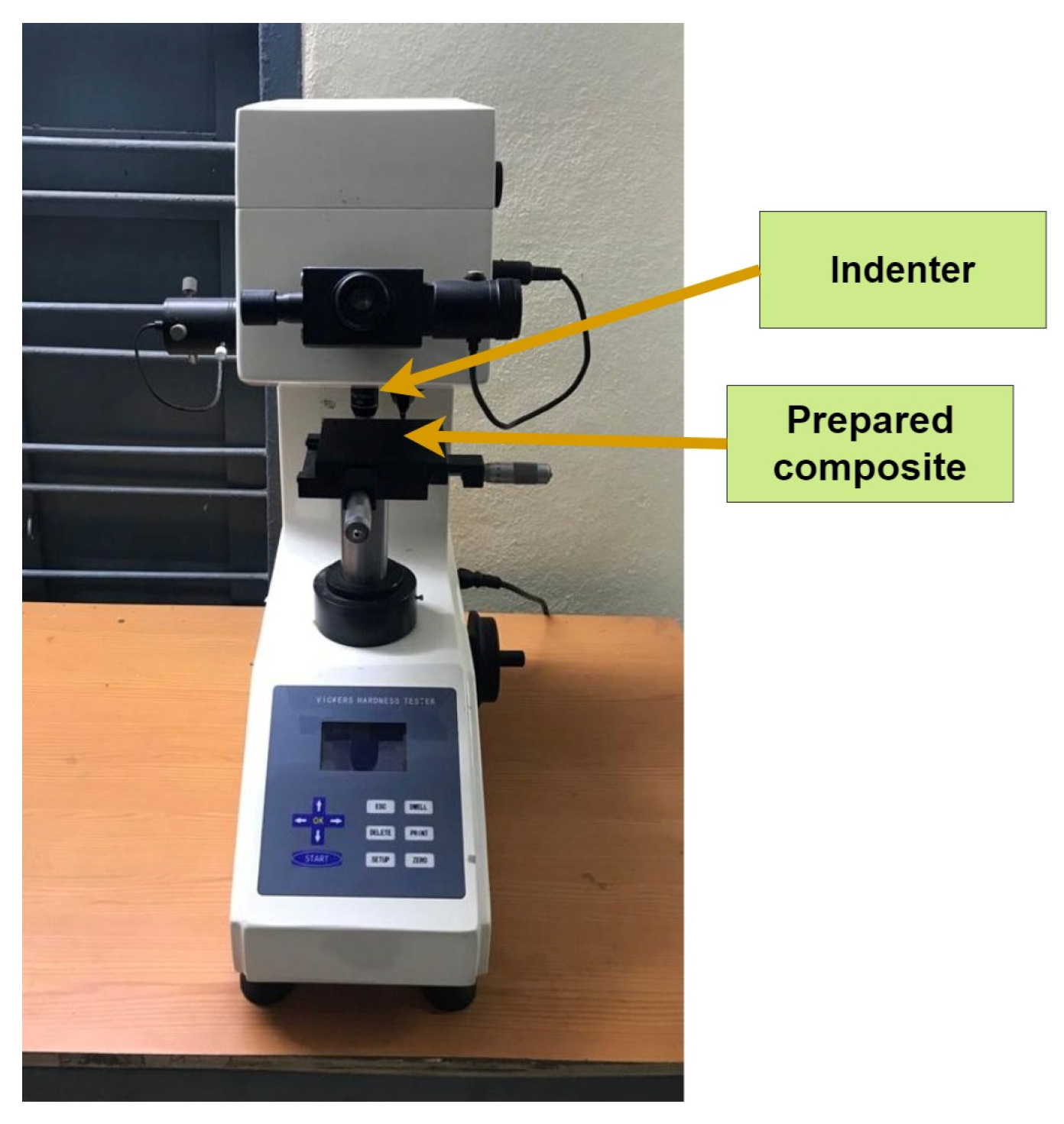

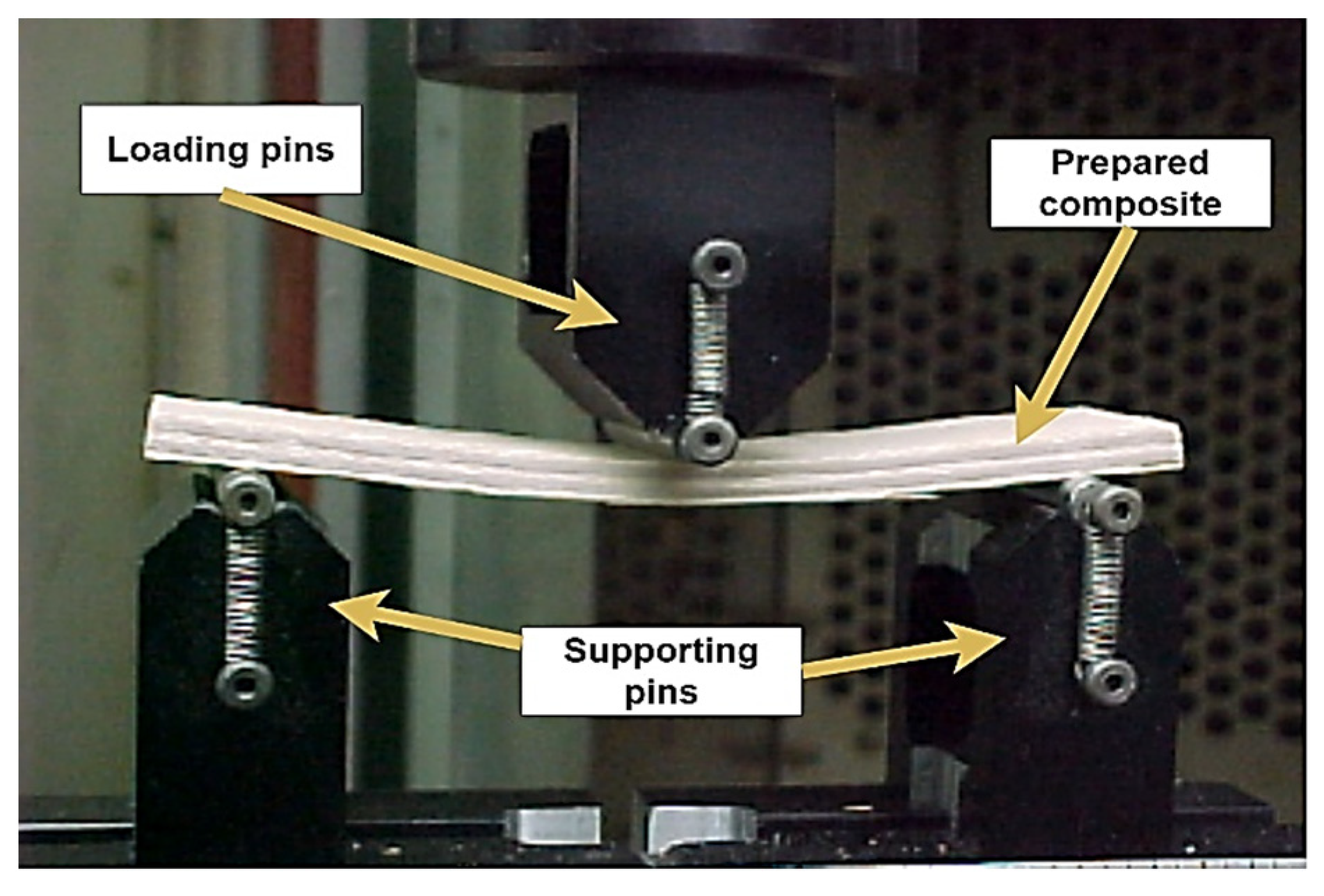

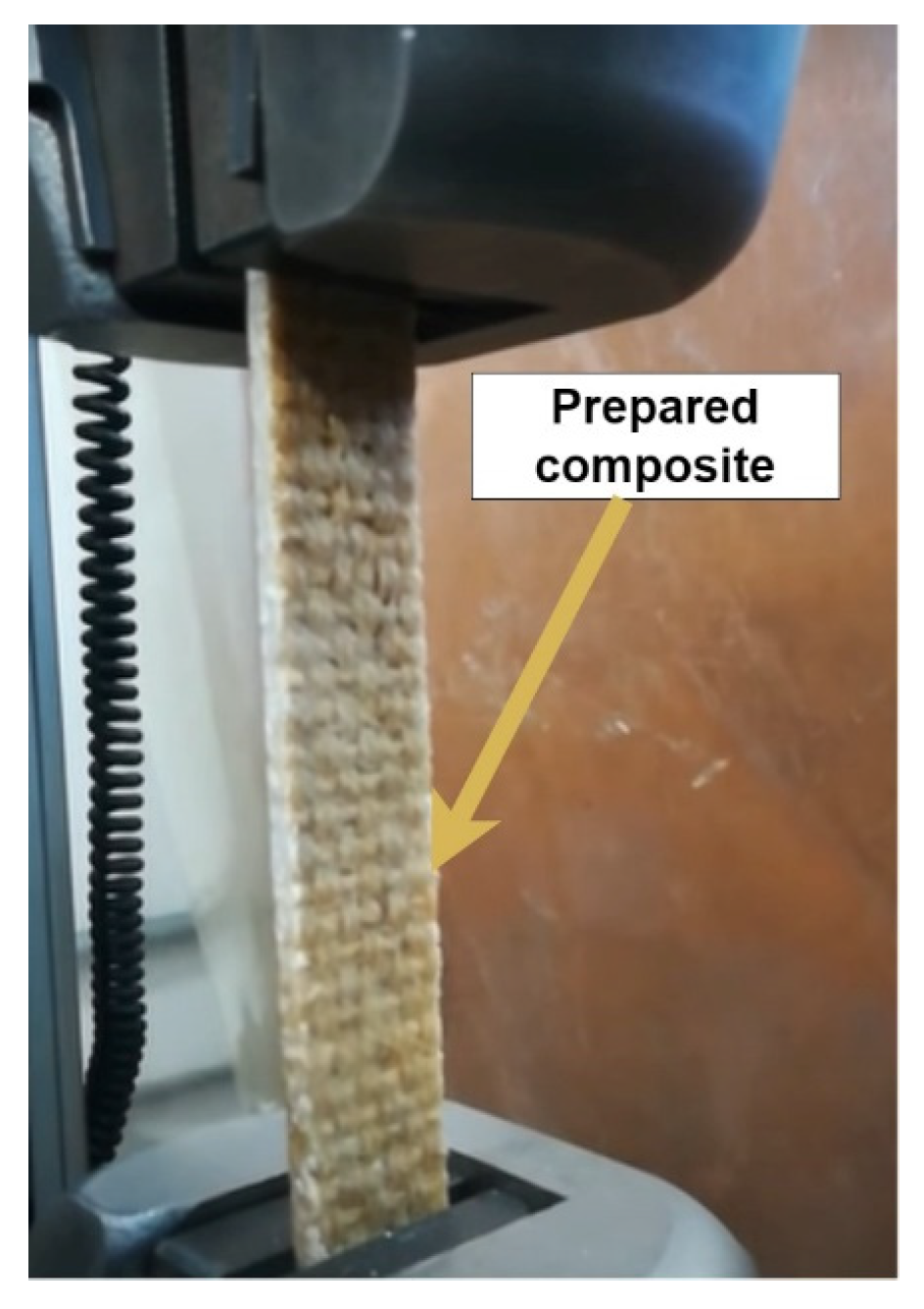
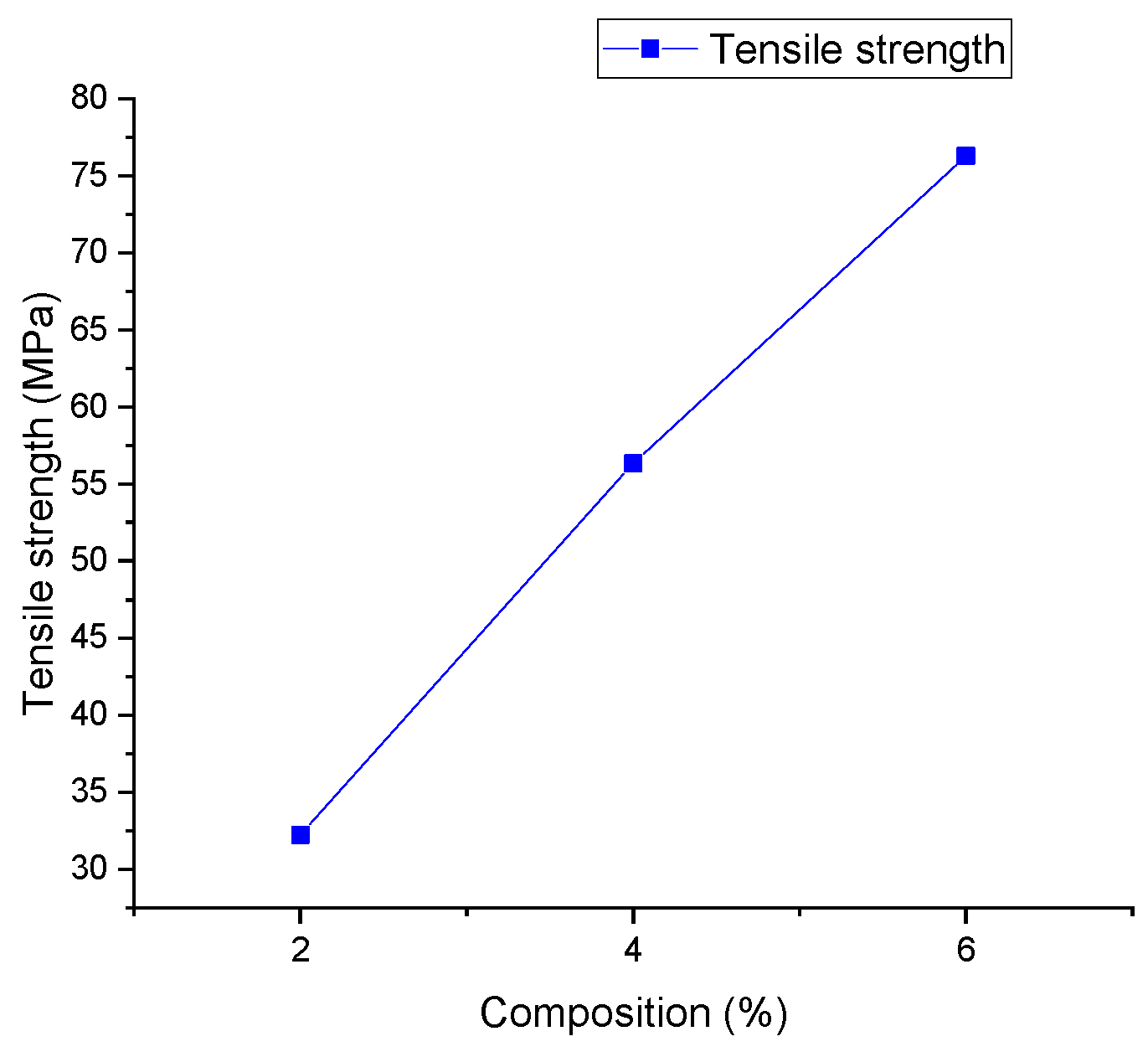

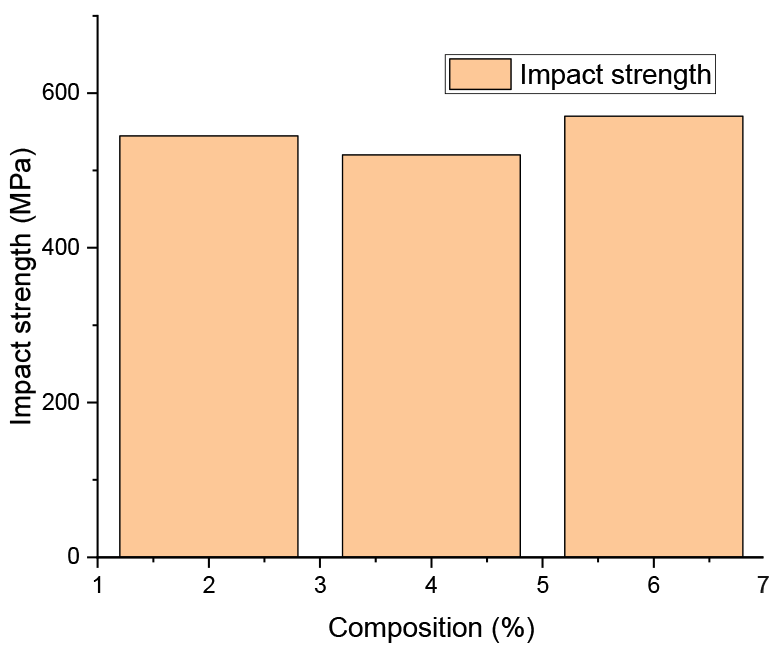

Disclaimer/Publisher’s Note: The statements, opinions and data contained in all publications are solely those of the individual author(s) and contributor(s) and not of MDPI and/or the editor(s). MDPI and/or the editor(s) disclaim responsibility for any injury to people or property resulting from any ideas, methods, instructions or products referred to in the content. |
© 2024 by the authors. Licensee MDPI, Basel, Switzerland. This article is an open access article distributed under the terms and conditions of the Creative Commons Attribution (CC BY) license (https://creativecommons.org/licenses/by/4.0/).
Share and Cite
Thirupathy, M.; Vadivel, M.; Subbiah, T.; Pathinettampadian, G. Experimental Investigation of the Mechanical and Tribological Properties of Jute Fiber Composites with Nano-Sized Al2O3 Ceramic Particle Reinforcement. Eng. Proc. 2024, 61, 39. https://doi.org/10.3390/engproc2024061039
Thirupathy M, Vadivel M, Subbiah T, Pathinettampadian G. Experimental Investigation of the Mechanical and Tribological Properties of Jute Fiber Composites with Nano-Sized Al2O3 Ceramic Particle Reinforcement. Engineering Proceedings. 2024; 61(1):39. https://doi.org/10.3390/engproc2024061039
Chicago/Turabian StyleThirupathy, Maridurai, Muthuraman Vadivel, Thirugnanam Subbiah, and Gurusamy Pathinettampadian. 2024. "Experimental Investigation of the Mechanical and Tribological Properties of Jute Fiber Composites with Nano-Sized Al2O3 Ceramic Particle Reinforcement" Engineering Proceedings 61, no. 1: 39. https://doi.org/10.3390/engproc2024061039
APA StyleThirupathy, M., Vadivel, M., Subbiah, T., & Pathinettampadian, G. (2024). Experimental Investigation of the Mechanical and Tribological Properties of Jute Fiber Composites with Nano-Sized Al2O3 Ceramic Particle Reinforcement. Engineering Proceedings, 61(1), 39. https://doi.org/10.3390/engproc2024061039





